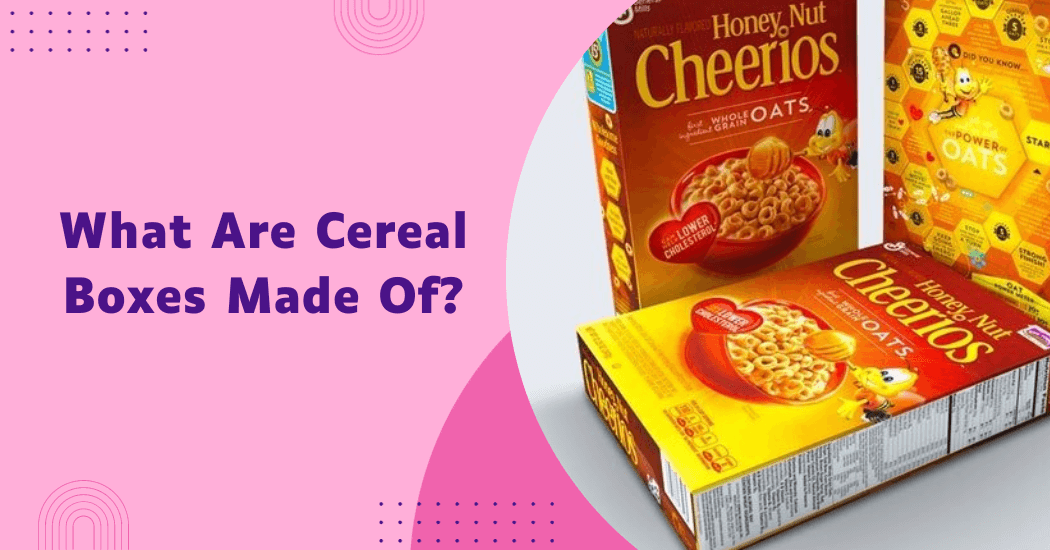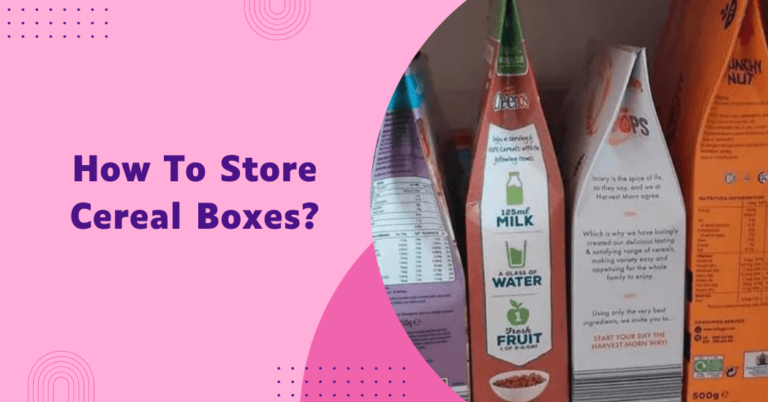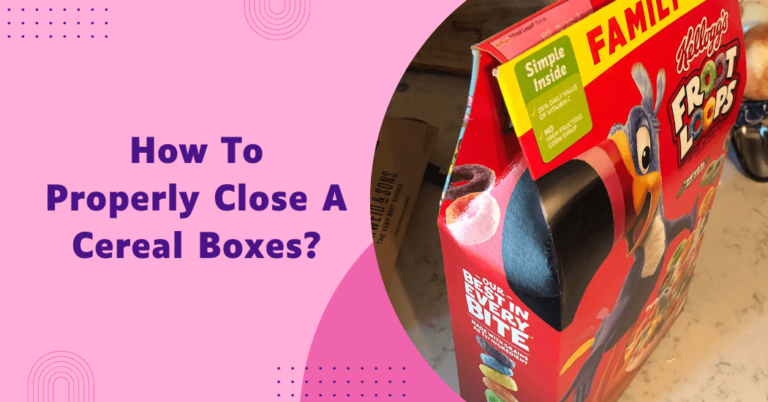What are cereal boxes made of?
Cereal boxes are ubiquitous in households around the world, serving as the colorful and familiar packaging for breakfast staples that fill our mornings with a burst of energy. These containers are so seamlessly integrated into our lives that their very design and composition often go unnoticed.
What exactly are these boxes made from, how are they produced and why are they designed the way they are?
In this blog post, we will delve into the composition of cereal boxes, exploring the materials used in their construction and the reasons behind the choices.
Cereal Boxes Made Of
Cereal boxes are typically made of a combination of paperboard and various coatings or laminations. Paperboard is a sturdy, thick type of paper that is used for packaging due to its strength and durability. It is often made from recycled materials such as old newspapers and cardboard boxes.
The coatings or laminations on cereal boxes serve multiple purposes, including providing a glossy finish for attractive packaging, protecting the box from moisture and grease and enhancing its structural integrity. These coatings can be made from various materials such as plastic, wax or aluminum foil.
The design of cereal boxes is carefully planned to not only catch consumers’ attention but also serve practical purposes.
For example, the classic rectangular shape allows for efficient stacking and storage on shelves, while the top opening and flaps make it easy to pour the cereal and keep it fresh. The vibrant and eye-catching designs are intended to stand out on crowded supermarket shelves, enticing customers to choose a particular brand.
Manufacturing Process Of Cereal Boxes
The process of manufacturing cereal boxes is a multi-step procedure, encompassing paperboard production, printing and designing as well as box cutting and folding.
1) Paperboard production
The production of paperboard is the first step in customization your own cereal box. This process begins with collecting and sorting recyclable materials, primarily old newspapers and cardboard.
These materials are then pulped, cleaned and mixed with water to form a slurry. The slurry is subsequently dried and pressed into sheets, creating a robust and durable paperboard.
2) Printing and designing
Once the paperboard is prepared, it undergoes a printing process where eye-catching designs and necessary information are imprinted onto it.
This step involves using high-quality inks (CMYK & Pantone) and advanced printing technology to ensure vibrant colors and sharp images. The designing phase is meticulously planned out, focusing on the brand’s identity, target audience and the need to stand out on supermarket shelves.
3) Box cutting and folding
The final stages of the manufacturing process involve cutting and folding the printed paperboard into the classic cereal box shape. Cutting machines are used to get precise dimensions and clean edges.
After the cutting stage, the paperboard is folded along pre-determined lines and glued together to form the box.
The top flaps are designed to be easily opened and closed, ensuring the cereal inside stays fresh. This multifaceted process results in the familiar, functional and appealing cereal boxes we see in our everyday lives.
Environmental impact and sustainability of cereal boxes
The environmental impact and sustainability of cereal boxes is a critical consideration in the manufacturing process. Cereal boxes, chiefly made from paperboard, contribute significantly to paper waste.
However, as most of these boxes are made from recycled materials and are themselves recyclable, they present a more environmentally friendly alternative to plastic packaging.
That said, the coatings and laminations on cereal boxes can complicate the recycling process. Certain coatings, such as those made from plastic or aluminum foil, are not easily recyclable and may need to be separated from the paperboard.
Moreover, the inks used in printing the vibrant designs can sometimes be harmful to the environment.
On the sustainability front, many companies are making efforts to reduce the environmental footprint of their cereal boxes. These initiatives include using FSC-certified paperboard, reducing packaging size and innovating with compostable coatings. Yet, the challenge lies in balancing sustainability with the practical requirements of packaging like durability, product protection and consumer appeal.
Understanding the environmental impact and sustainability of cereal boxes allows manufacturers and consumers to make more informed choices, pushing towards a more sustainable future for our planet.
FAQs -Cereal Boxes Manufacturing
Why are cereal boxes shaped the way they are?
The rectangular shape of cereal boxes is designed for practical purposes such as efficient stacking and storage on shelves. The top opening and flaps make it easy to pour the cereal and keep it fresh.
Why are the designs on cereal boxes so vibrant?
The bright and eye-catching designs on cereal boxes are intended to attract customers’ attention and stand out on crowded supermarket shelves. The design phase is meticulously planned out, focusing on the brand’s identity, target audience and the need to differentiate from competitors.
Can cereal boxes be reused for other purposes?
Yes, many people reuse cereal boxes for various purposes, such as crafting, organizing or gift wrapping. Recycling or repurposing cereal boxes is a creative and sustainable way to give them a second life.
Are cereal boxes regulated for food safety?
Yes, cereal box materials are subject to food safety regulations to ensure that they do not contaminate the food product. Manufacturers must adhere to standards and guidelines to guarantee the safety and quality of the packaging.
Final Words
Cereal boxes are an integral part of our daily lives, each one a product of a meticulous manufacturing process. They are primarily made of paperboard, a robust and durable material derived from recyclable materials such as old newspapers and cardboard.
The production process includes paperboard production, printing and designing and box cutting and folding. While these boxes significantly contribute to paper waste, their ability to be created from and turned back into recyclable material presents a viable solution to environmental concerns.
However, the environmental impact extends beyond the base material, with coatings, laminations and inks also playing a role. Efforts towards sustainable practices in cereal box production are ongoing, to find a balance between practical packaging requirements and environmental responsibility.



